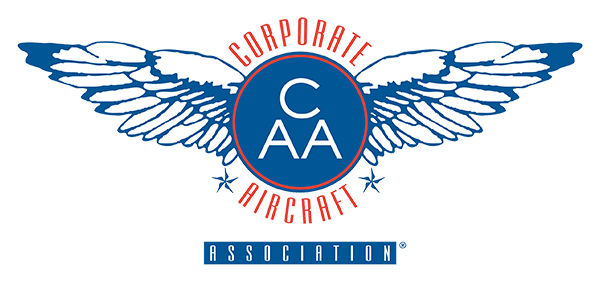Results 1 to 16 of 16
-
Username ProtectedFrequent Poster
- Posts
- 109 Posts
- Thanked 25 times
- Researching Phenom 100
- Join Date
- Joined Sep 2021
04-17-2023, 12:43 PM #1
#1
Windshield heat recommendation/logic
Does anyone, maybe the P100 instructors? Have a recommendation for use of windshield heat in the 100?
Embraer language seems more than a bit ambiguous to me- “windshield heat as required”?
I have had someone tell me they put the heat on above FL180 to avoid the glass cold soaking and possibly cracking? Is that true? Any data?
specifically, can it be left ‘OFF’ until required (ie until visible frost, ice etc etc)
Does it even have to be a checklist item? I mean, if you think your visibility through the glass is getting compromised, it’s easy enough to switch it on. Unless, there are engineering related reasons for it being a current checklist item as it is. -
Username ProtectedMember
- Posts
- 33 Posts
- Thanked 23 times
- Phenom Pro Pilot
- Join Date
- Joined Dec 2021
04-18-2023, 11:21 AM #2The SOP states turning the windscreen heats on above 10,000 ft “as required.” An airline I flew for had us turn on windscreen heats crossing through 10,000’ along with turning off landing lights. I carried that over to the Phenom and it worked well for me. I never had any issue with fogging or frost. The same logic applied turning heats off descending through 10,000’ unless in icing conditions.
-
Username ProtectedFrequent Poster
- Posts
- 79 Posts
- Thanked 34 times
- Phenom Pro Pilot
- Join Date
- Joined Oct 2020
04-18-2023, 10:40 PM #4On at 10K per the SOP’s unless the outside temps are staying relatively warm and no visible moisture where I’ll delay until 18K. If you wait until frost or ice is visible, you’re behind the power curve. Consider windshield heat an anti-ice function like your nacelle heat where it’s meant to prevent ice formation versus remove it like a de-ice device. Also think about the effect of applying heat once the windshield is cold soaked. Another jet I flew with electrically heated panes highly recommended against this as it would cause premature delaminating of the layers.
-
Username ProtectedFrequent Poster
- Posts
- 83 Posts
- Thanked 51 times
- Phenom 100 Owner & Pilot
- Join Date
- Joined May 2021
04-19-2023, 07:27 AM #5All the mentor pilots I flew with used 10k for vmc. If you forget, you may not see frost until 25k+, but once you do, it takes a while for the recently applied heat to do its job. Huge drain on the batteries if you forget to turn it off during descent or after landing and accidentally shut down the engines with it on…but… I’ve never done that!
-
04-19-2023, 09:28 AM #6
Think of it in this manner, as with any anti-ice device, it is preventative not reactive. Such as boots, (in the Phenom 100) you put them on before you actually get ice accumulation. I know there are different schools of thought on this but going by Embraer’s SOP. With ADS probes, they come on with engine start to prevent ever getting ice. Same concept.
With the windshields, you know you will get degraded visibility (frost). I put them on at FL180 to avoid them frosting in the first place. If you have forgotten, you’ll know it will then take a while to clear them. Just seems more logical to me to prevent having them frost up in the first place. -
Username ProtectedFrequent Poster
- Posts
- 79 Posts
- Thanked 34 times
- Phenom Pro Pilot
- Join Date
- Joined Oct 2020
04-20-2023, 12:32 PM #9Calling the 100's wing and stab ice protection an "anti-ice" system and operating it the same as one is incorrect. They're stated in the manual to be a "de-ice" system(read removal), not anti-ice (read preventative). You also improperly compare SOP and that it's the same concept as ADS probes coming on at engine start. A pneumatic boot doesn't function as nor is it intended as an anti-ice system like electrically or bleed air heated systems. While the manual may say they can be turned on when entering icing conditions, it's not the proper way to use boots on just about any aircraft so equipped-including those that will periodically cycle when activated. CAE's training even advises against preemptively turning them on until after ice has accumulated sufficient thickness to prevent bridging. Important to know as bridging has been a causal factor in more than a couple of accidents.
-
Username ProtectedMember
- Posts
- 33 Posts
- Thanked 23 times
- Phenom Pro Pilot
- Join Date
- Joined Dec 2021
04-20-2023, 01:10 PM #10Can you cite the accidents where ice bridging was a definitive causal factor? The airline where I flew Q400s, also boot equipped, showed us a summary of the certification testing from the airplane. There was no evidence that bridging was a concern.
There’s also an article that discusses bridging:
https://airfactsjournal.com/2020/11/...that-wont-die/ -
Username ProtectedFrequent Poster
- Posts
- 79 Posts
- Thanked 34 times
- Phenom Pro Pilot
- Join Date
- Joined Oct 2020
04-20-2023, 04:50 PM #11You are correct and I'm for the most part not. While not documented as causal in an NTSB investigation, there are at least 2 military King Air incidents where it was cited as likely contributing. One of those I was actually part of the investigation. I've honestly not regularly flown a boot equipped aircraft since 2013, but the phenomenon, or now supposed myth, of bridging was still being taught then. I flew a KA90 variant and the instructors at the school (non-civ) claimed and showed pics they claim substantiated it was a possibility. During the 2 1/2 months I spent in the right seat of a 100 waiting on a 300 class date, I asked the pilots about the technique they used in regards to boot activation versus what was in the SOP and what was taught in training. They all said they were trained to wait for ice accrual due to the possibility of bridging and company recommendation followed suit. That was in 2015, so apparently just as behind on the info as I am. Definitely something I'll re-educate myself on as I may be regularly flying a boot equipped aircraft again soon.
-
Username ProtectedMember
- Posts
- 33 Posts
- Thanked 23 times
- Phenom Pro Pilot
- Join Date
- Joined Dec 2021
04-20-2023, 05:22 PM #12Copy all. I was surprised to hear CAE teaching something directly against Embraer’s procedures. I have a feeling it was a technique and theory passed down from one instructor to the next without anything to back it up.
Here’s an excerpt from the Phenom 100 AFM section for operating in icing conditions. Highlighting is mine not in the manual.
Crew must activate the ice protection system when icing conditions
exist or are anticipated as follows:
If SAT (TAT inflight) is between 5°C and 10°C with visible moisture:
ENG 1 & 2 Switches...................................... ON
WINGSTAB Switch........................................ OFF
WSHLD 1 & 2 Switches................................. OFF
At the first sign of ice formation or if SAT (TAT inflight) is below 5°C
with visible moisture:
WSHLD 1 & 2 Switches................................. ON
ENG 1 & 2 Switches...................................... ON
WINGSTAB Switch........................................ ON
When the manufacturer states using any system with a “must” I tend to not argue with them. I’m not going to discount what a team of engineers, test pilots, and people with more knowledge about a specific system design know that I, or instructors, may or may not know. -
Username ProtectedFrequent Poster
- Posts
- 109 Posts
- Thanked 25 times
- Researching Phenom 100
- Join Date
- Joined Sep 2021
04-21-2023, 11:44 PM #13
#13
Good observations and comments from all above. Thank you, all!
To take it a step further, if in clear weather with no precipitation, temps of course will go down with increasing altitude.
Any harm to NOT using windshield heat in above circumstance?
Is there a propensity for damage to the windshield if heat is not used? -
Username ProtectedMember
- Posts
- 68 Posts
- Thanked 32 times
- Phenom Pro Pilot
- Join Date
- Joined May 2021
04-27-2023, 10:44 PM #14Use it every flight. It's keeping the frost from the INSIDE of your windscreen that you will get up in flight levels. As part of your normal ops, you won't forget about it when you do encounter weather. Also, I'd rather know early on if any part of the system is inop so I can plan accordingly later in the flight.
There's no reason to not use it.
- Quick Links
- New Posts
- Participated
- Subscribed
- Today's Posts
- Hot This Week


 Reply
Reply






















